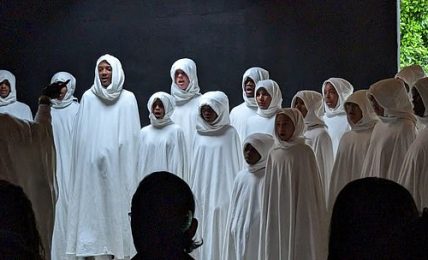Britain has become the first western country to provide Ukraine with the long-range Storm Shadow cruise missiles that Kyiv wants to boost its chances in a much-anticipated counteroffensive, prompting a threat from the Kremlin of a military response.
Hours after Ukraine’s president, Volodymyr Zelenskiy, said he needed more western weapons to be confident of a victory this summer, Ben Wallace, the UK defence secretary, told MPs that the missiles – which cost more than £2m each – were “now going in, or are in the country itself”.
The gift of the missiles was supported by the US, Wallace added, although previously Washington had declined to give Ukraine long-range missiles of its own, fearing that the outcome could escalate hostilities in the 15-month war.
Reflecting such concerns, the minister said the decision was “a calibrated and proportionate response” to the Russian invasion, and in particular Moscow’s repeated targeting of Ukrainian civilians.
At least 23,000 civilians had been killed or injured, Wallace said. Russia had made “788 attacks on healthcare facilities, hospitals, clinics, medical centres”, and on many occasions killed civilians in missile strikes, he added.
“The use of Storm Shadow will allow Ukraine to push back Russian forces based within Ukrainian sovereign territory,” Wallace told MPs, adding: “Russia must recognise that their actions alone have led to such systems being provided.”
Speaking at a press briefing in Moscow, the Kremlin spokesperson Dmitry Peskov said Russia was taking a “rather negative” view of the UK’s move. “This will require an adequate response from our military, who … will make appropriate decisions,” he said.
Wallace did not say how many Storm Shadow missiles had been given to Ukraine, although it has been estimated the UK holds a stock of between 700 and 1,000. Working with four other countries, the UK issued a tender to buy more long-range “missiles or rockets with a range of 100-300km” (62 to 186 miles).
Storm Shadow has a range of “in excess of 250km”, according to its manufacturer, the European arms group MBDA. That is significantly further than the high-precision US Himars rocket launchers currently used heavily by Ukraine, which rely on missiles with a range of 47 miles. Himars have become less effective as the Russian invaders have moved reserves of troops and equipment out of their range.
There have been concerns that the Storm Shadow missiles could be used to strike targets deep inside Russia’s internationally recognised borders. The White House has balked at supplying Ukraine with similar long-range ATACMS missiles, which can be fitted to the Himars systems.
Wallace said the US was “incredibly supportive” of the UK’s decision, and said ATACMS missiles were not as suitable as Storm Shadow, which is designed to be able to strike defensive positions below ground.
A US official said that “each country makes their own sovereign decisions” about what weapons to give to Ukraine, and stressed that the Biden administration appreciated the contributions made by “more than 50 countries, including the UK” in support of Kyiv in its effort to kick out the Russian invaders.
Ukrainian commanders on the ground have said Kyiv still lacks vital weapons needed for a large-scale campaign to succeed. These include long-range missiles. Without them, it is feared that deep-lying reserves could be used to snuff out any Ukrainian counteroffensive quickly if it looks likely to break through.
Earlier, Zelenskiy said in a television interview Ukraine needed more time before it could launch its much-anticipated counteroffensive, and was still waiting for key weapons to arrive.
The president said newly formed brigades were ready to attack, but were at risk of taking too many casualties if they did so now. “We can go forward and be successful. But we’d lose a lot of people. I think that’s unacceptable,” he said. “So we need to wait. We still need a bit more time.”
His comments are the clearest sign yet that the Ukrainian military push, on which the outcome of the war may depend, is unlikely to take place in the next few weeks. Long-range attacks on key Russian military sites in Crimea and elsewhere deep in occupied territory are likely to be a prelude to any frontline assault.
Justin Bronk, an aviation analyst at the Rusi thinktank, described Storm Shadow as “an expensive weapon designed for strategic targets such as command centres, logistics hubs or other high-value fixed sites”.
Experts say Storm Shadow could be used to strike targets such as the Dzhankoi rail and logistics hub in northern Crimea, as well as the naval base at Sevastopol and airfield at Saky. Rendering them unusable would make it harder for Russia to push back against any Ukrainian counterattack.
Ukrainian leaders have publicly said they would not use long range missiles inside Russia, although leaked Pentagon papers reported, based on electronic eavesdropping, that Zelenskiy privately complained to his top commander that Ukraine “does not have long-range missiles capable of reaching Russian troop deployments in Russia”.
Ukraine has been gradually amassing western tanks and armoured vehicles as it seeks to build up a counterattack force of 12 brigades aimed at breaking through Russian lines and demonstrating that it could be possible for Kyiv to push the invaders out of the country.
Bronk said that although Nato standard weapons, Storm Shadows could be mounted under the Soviet-standard jets used by Ukraine’s air force, and, as with any cruise missile, could be pre-programmed from the ground.
Ukraine’s small surviving air force runs about 12 or so missions a day, its pilots often flying a few metres above ground to evade detection.
British sources said giving Storm Shadow missiles was compatible with the UK’s signature to the voluntary missile technology control regime, which is intended to limit the proliferation of cruise missiles.
Although the missiles are considered a category 1 weapon, and so there is a “strong presumption” that they will not be exported to other countries, officials pointed to the fact that an exception can be made “on rare occasions” where there is a demonstrable need.


